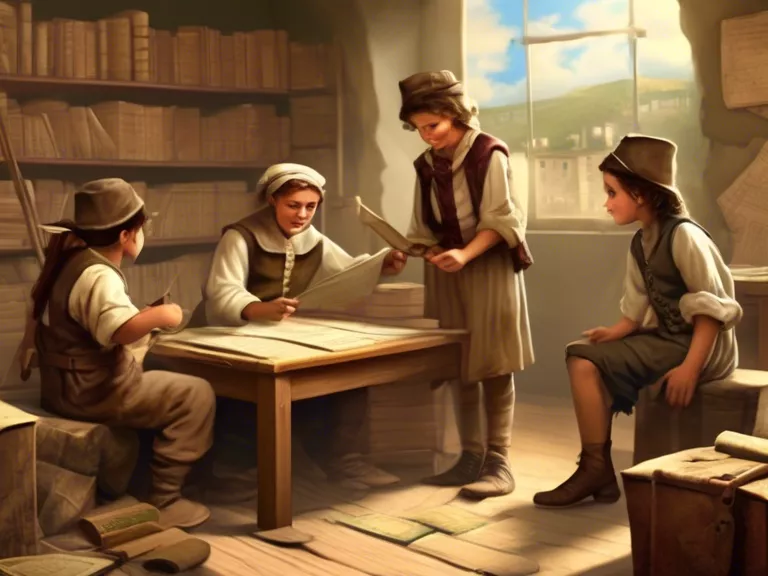
Ancient Educational Games
Educational games have a rich history that dates back to ancient times. In civilizations such as Egypt, Greece, and Rome, games were used as a tool for teaching various subjects to children. These games were designed to be both engaging and educational, helping young learners develop important skills and knowledge.
The Role of Games in Ancient Education
In ancient Egypt, board games like Senet were popular among both children and adults. These games were not only a form of entertainment but also served as a way to teach mathematical concepts, strategy, and critical thinking skills. Similarly, in ancient Greece, games like Petteia were used to teach military strategy and tactics to young warriors.
Educational Games in the Middle Ages
During the Middle Ages, educational games continued to play a significant role in teaching children important skills. Chess, for example, became a popular game among nobility and was used to teach strategic thinking and problem-solving. Other games, such as Alquerque and Backgammon, were also commonly played and helped children improve their math and logic skills.
Evolution of Educational Games
As society advanced and technology evolved, educational games underwent a transformation. With the advent of computers and digital technology, a new era of educational gaming began.
The Rise of Digital Educational Games
The 20th century saw the emergence of digital educational games, with early examples like "The Oregon Trail" and "Math Blaster" gaining popularity in schools and homes. These games combined entertainment with learning, making them an effective tool for engaging students and reinforcing educational concepts.
Modern Learning through Games
In recent years, educational games have become more sophisticated and diverse, thanks to advancements in technology. Mobile apps, virtual reality, and online platforms have revolutionized the way students learn and interact with educational content. Games like "MinecraftEdu" and "Kahoot!" are examples of how gamification can enhance the learning experience and make education more engaging and effective.
Benefits of Educational Games
Educational games offer numerous benefits to learners of all ages. By incorporating game elements into the learning process, students can improve their cognitive skills, problem-solving abilities, and creativity. Games also provide a fun and interactive way to reinforce learning concepts and motivate students to engage with educational material.
Enhancing Critical Thinking
Educational games challenge players to think critically, analyze information, and make decisions based on the outcomes. This helps develop important skills such as problem-solving, decision-making, and strategic planning.
Fostering Collaboration
Many educational games encourage collaboration and teamwork among players. By working together to achieve a common goal, students learn how to communicate effectively, share ideas, and support each other in a cooperative learning environment.
Personalized Learning Experience
One of the key advantages of educational games is their ability to provide a personalized learning experience. Games can adapt to individual learning styles and pace, allowing students to progress at their own speed and focus on areas where they need improvement.
Conclusion
From ancient board games to modern digital platforms, educational games have played a vital role in teaching and learning throughout history. By combining entertainment with education, these games have proven to be effective tools for engaging students, reinforcing learning concepts, and fostering important skills. As technology continues to evolve, the future of educational games looks promising, offering endless possibilities for innovative and interactive learning experiences.



